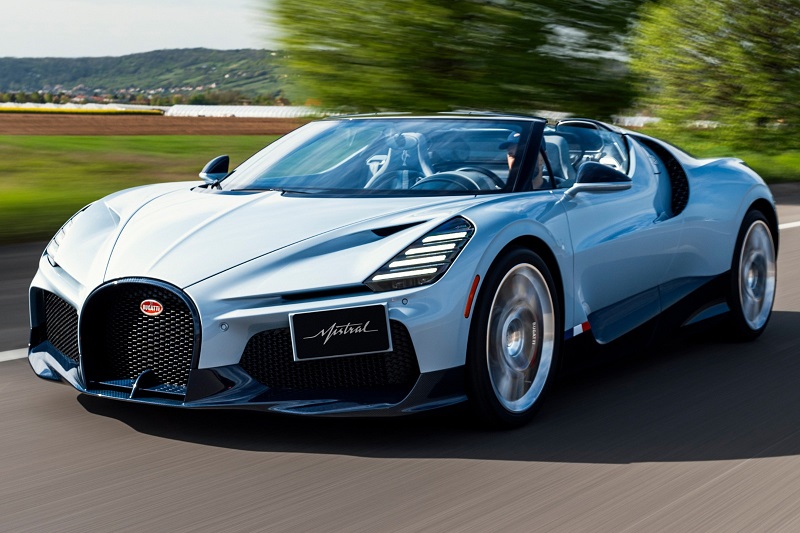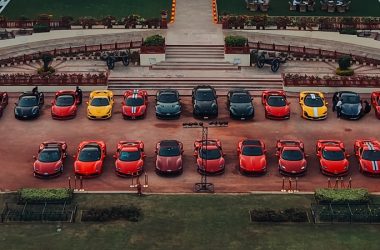Bugatti has long been synonymous with high-performance roadsters, a legacy spanning over a century of automotive innovation. From the legendary Type 35 to the iconic Veyron Grand Sport Vitesse, the marque has consistently pushed the boundaries of design and performance in open-top automobiles. The latest and perhaps most anticipated addition to this illustrious lineup is the W16 Mistral, now entering its final testing phase.
The W16 Mistral is significant for many reasons. It is the first open-top model to leave the Molsheim factory since 2015 and serves as the swan song for Bugatti’s incomparable W16 engine. Given the project’s importance and Bugatti’s commitment to upholding its storied reputation, the testing program for the Mistral has been nothing short of exhaustive.

At the heart of the Mistral lies the definitive incarnation of the iconic W16 engine, paired with meticulously honed aerodynamic attributes and an entirely reengineered monocoque. Achieving unrelenting performance, acoustic excellence, and ultimate luxury, while enabling a top speed in excess of 420 km/h, represents an extreme balancing act. Bugatti has left no stone unturned in its quest to create the ultimate roadster, subjecting the Mistral to a rigorous evaluation process that ensures performance, safety, and durability.
As we move into the latter half of 2024, the W16 Mistral is now in its final evaluation phase. “We are in the last part of the testing program – we are getting close to the finish,” said Emilio Scervo, CTO of Bugatti Rimac. “From the initial validation stages to the intensive endurance tests, every aspect of the Mistral’s development is precisely planned and executed. The Mistral is the ultimate example of our dedication to setting new standards in roadster design.”
Stringent crash tests, an essential phase given the new monocoque design, have already been successfully completed. These tests are vital for obtaining homologation in various markets, including North America and Europe, ensuring compliance with international safety standards. In addition to crash tests, aerodynamic evaluations were completed last October, and the W16 engine and its transmission have been thoroughly tested on the dynamometer to guarantee the exhilarating performance expected from a Bugatti.
The road tests for the Mistral are comprehensive and demanding. Prototype 2 alone has already covered an impressive distance of 32,000 km, demonstrating its adaptability and durability across various terrains, from high-altitude mountains to sea level and even heavy traffic conditions. Looking ahead, Bugatti plans to add another 5,000 kilometers on the track, bringing the total testing distance for this prototype to 40,000 km – a figure that surpasses the mileage of most modern-day Bugatti customer cars.
One of the most challenging aspects of the final testing phase will be verifying the Mistral’s top speed. This involves the logistical challenge of finding a suitable track that allows the Mistral to safely reach speeds exceeding 420 km/h. Despite this hurdle, the brand is confident that the Mistral will break records and exceed expectations. “We are planning to run the final high-speed test on one of the very few tracks worldwide that allow us to conduct the test in safe conditions. Once we have access to that track, achieving the top speed will no longer be a problem,” added Scervo.
Throughout the Mistral’s development, Bugatti has remained steadfast in delivering a car that meets and exceeds performance standards while setting new benchmarks for safety and reliability in a hyper sports roadster. The Mistral promises an unparalleled luxury and driving experience, and as it nears the end of its testing journey, production of Bugatti’s most aerodynamic and emotionally evocative roadster is expected to commence at the Molsheim Atelier later this year.
The W16 Mistral represents not just a continuation but an evolution of Bugatti’s legacy, marrying timeless design with cutting-edge technology to create a roadster that will undoubtedly be remembered as one of the brand’s most significant achievements.






